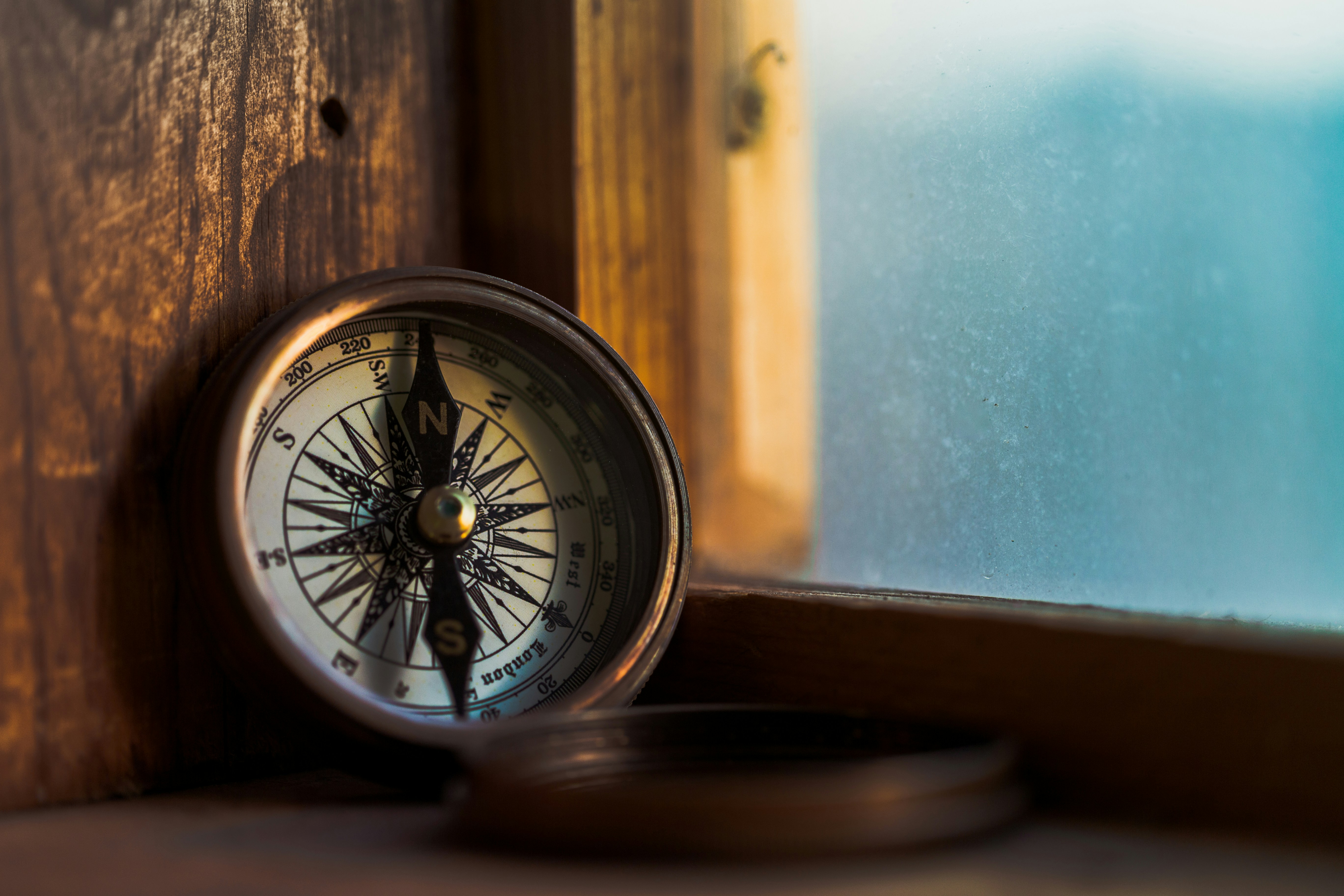Imagine finding yourself in a dense forest, surrounded by towering trees and winding paths, with no clear sense of direction. The absence of a compass may seem daunting, but fear not, for there are alternative ways to navigate and find your way through the wilderness. In this article, we will explore various methods and techniques that will help you navigate without a compass, allowing you to embark on adventurous journeys with confidence and ease. So sit back, relax, and let’s uncover the secrets of finding your way when the compass is nowhere to be found.

Understanding Basic Directional Orientation
The concept of North, South, East, and West
When it comes to navigation, understanding the basic directional orientation is crucial. The four cardinal directions – North, South, East, and West – provide a foundation for finding your way without a compass. North is typically represented by the direction towards the Earth’s geographic North Pole, South by the opposite direction towards the South Pole, East is the direction in which the sun rises, and West is the direction in which the sun sets.
Practical exercises for learning orientation without tools
To become proficient at navigating without a compass, it’s essential to practice and develop your directional orientation skills. One practical exercise you can try is using natural features or landmarks to orient yourself. For example, if you’re in an open field, take note of where the sun rises and sets. With practice, you will start to develop an intuitive sense of direction.
Another effective exercise is using a stick or a straight object to cast a shadow. Place the object vertically in the ground and mark the spot where the tip of the shadow falls. Wait for 10-15 minutes and mark the new spot where the tip of the shadow has moved. The line connecting the two marks will indicate an approximate East-West direction, with the first mark being West and the second mark being East.
Using the Sun for Navigation
Understanding solar arcs
The sun’s position in the sky changes throughout the day, following a predictable pattern known as solar arcs. In the Northern Hemisphere, the sun rises in the east, reaches its highest point at noon in the south, and sets in the west. In the Southern Hemisphere, this pattern is reversed, with the sun rising in the east and setting in the west. By observing the angle and position of the sun, you can determine your approximate direction.
Methods to determine direction based on the sun’s position
One method to determine direction using the sun is the watch method. Point the hour hand of a watch towards the sun and imagine a line bisecting the angle between the hour hand and the 12 o’clock mark. This imaginary line will point south in the Northern Hemisphere and north in the Southern Hemisphere.
Another technique is using a shadow stick. Place a stick vertically in the ground and mark the end of the shadow it casts. Wait for 15 minutes and mark the shadow’s new end. The line connecting the two marks will run approximately in the east-west direction, with the first mark indicating the west.
Precautions and limitations of solar navigation
While using the sun for navigation is a useful skill, it’s important to note its limitations. Solar navigation is dependent on clear skies and a visible sun. When it’s overcast or during periods of low visibility, this method may not be reliable. Additionally, solar navigation provides a general sense of direction but may not be precise enough for detailed navigation over long distances.
Navigating by the Stars
Identifying constellations and celestial bodies
Navigating by the stars has been practiced for centuries, providing a reliable method for finding direction. Begin by familiarizing yourself with prominent constellations and celestial bodies visible in the night sky. Constellations like the Big Dipper (Ursa Major) and Orion are easily recognizable and can serve as useful points of reference.
Using constellations to identify cardinal directions
Once you’ve identified key constellations, they can help you determine cardinal directions. By observing the North Star (Polaris) and its position in relation to other stars, you can find true north in the Northern Hemisphere. In the Southern Hemisphere, the Southern Cross constellation is often used to approximate south.
Variations in star placement across different hemispheres
It’s important to note that the positions of stars and constellations vary depending on your location and the time of year. The same constellation may appear differently in different hemispheres. It’s essential to familiarize yourself with the night sky specific to your location to effectively navigate using the stars.
Using the Moon for Navigation
The lunar cycle and its implications for navigation
The moon undergoes a predictable cycle of phases, each lasting approximately 29.5 days. By understanding and tracking the lunar cycle, you can utilize the moon as a navigational tool. During a full moon, the moon rises in the east and sets in the west, much like the sun. This can provide a rough east-west reference.
Understanding moon paths and positions
Another way to use the moon for navigation is by observing its path across the sky. The moon follows an eastward path across the sky, similar to the sun but at a slower pace. By observing the moon’s position at a specific time, you can estimate your approximate direction.
Utilizing Landmarks and Terrain
Methods of orientation using notable landmarks
Landmarks can be invaluable for navigation. Natural and man-made features like mountains, rivers, and buildings can serve as prominent landmarks to orient yourself. By familiarizing yourself with these landmarks and their relative positions, you can maintain a sense of direction.
Identifying and utilizing terrain gradients and bodies of water
Terrain gradients, such as hills or slopes, can be used as directional cues. In general, water tends to flow downhill, so rivers and streams can provide a consistent eastern or western reference depending on the direction of their flow. Understanding these natural features can be helpful when navigating without a compass.
Creating your own landmarks
In situations where recognizable landmarks are scarce, creating your own landmarks can be a practical solution. This can be done by arranging stones, sticks, or other visible objects in a particular pattern or formation that you will be able to recognize when navigating the area again later.
Using Animals and Plant Life for Navigation
Observing local wildlife and their patterns
Animals, especially birds and insects, often exhibit predictable patterns of behavior that can indicate cardinal directions. For example, birds tend to migrate in specific directions during certain seasons. Observing these patterns can provide valuable hints about which direction to take.
Using plant growth and positioning for directional cues
Plants can also provide useful navigational cues. Some plants, like sunflowers, track the sun’s movement throughout the day and can be used to approximate east and west. Additionally, moss tends to grow on the north side of trees or rocks due to its preference for shade. These natural indicators can aid in determining direction.
Limitations and variables in bio-navigation
While using animals and plant life for navigation can be helpful, it’s important to recognize their limitations and variables. Animal migration patterns can be influenced by factors such as food availability and climate changes, making them less reliable in certain situations. Similarly, relying solely on plant growth or positioning may not always yield accurate results due to local variations and other environmental factors.

Understanding Map Reading Basics
Key components of maps
When navigating without a compass, understanding how to read a map becomes essential. Maps typically include key components such as scale, symbols, a legend, and contour lines. Understanding these elements will allow you to interpret and navigate using a map effectively.
How to use maps without a compass
Maps can provide a wealth of information for navigation. By identifying prominent landmarks, orienting yourself with the map’s compass rose or north arrow, and using geographic features like rivers or roads as reference points, you can navigate accurately without a compass. Map-reading skills are valuable in both urban and wilderness environments.
Interpreting geographical features on a map
Geographical features depicted on a map can yield vital directional information. Pay attention to contour lines, which represent changes in elevation, and their spacing, which indicates the steepness of slopes. Rivers and streams typically flow downhill, and their direction can help you find your way. By interpreting these features on a map, you can plan your route and navigate with confidence.
Improvising Navigational Tools
Creating makeshift compasses
When a compass is unavailable, you can employ various methods to create makeshift compasses. One technique involves using a magnetized object like a needle or paperclip, rubbing it against silk or your clothes to magnetize it, and placing it on a small leaf floating in water. The needle will align itself with the Earth’s magnetic field, indicating north-south direction.
Another method involves using the shadow of a stick. Place a stick upright in the ground and mark the end of the shadow cast. Wait for about 15 minutes, mark the end of the new shadow, and draw a line connecting the two marks. This line will represent the approximate east-west direction.
Other creative tools for determining direction
In addition to makeshift compasses, several other creative tools can help determine direction. The position of the stars, the growth patterns of certain plants, or even the flight path of birds can provide directional cues. It’s essential to stay observant and resourceful when navigating without traditional tools.
Tips and Precautions for Compass-less Navigation
Staying aware of your surroundings
When navigating without a compass, staying aware of your surroundings is crucial. Pay attention to natural indicators, such as the position of the sun, landmarks, and the behavior of animals. By constantly observing and interpreting your environment, you can maintain a sense of direction.
Strategies to avoid getting further lost
If you find yourself uncertain about your direction, pausing and refraining from making impulsive decisions can prevent getting further lost. Take the time to reorient yourself using available methods, such as identifying landmarks or observing celestial bodies. It’s better to make deliberate and informed choices than to wander aimlessly.
What to do when various navigational methods conflict
Sometimes, different navigational methods may provide conflicting information. In such cases, it’s important to consider the reliability and accuracy of each method. Rely on multiple sources of information, like cross-referencing different methods or consulting various navigational tools, to make an informed decision about the most likely direction to follow.
Survival Skills and Navigation
The importance of navigation in survival situations
In survival situations, accurate navigation becomes even more critical. Whether you’re lost in the wilderness or in an unfamiliar urban environment, being able to determine your direction can lead you to safety, water sources, or help. Navigational skills can be a lifeline in dire situations.
Pairing compass-less navigation with other survival skills
Compass-less navigation should be complemented with other survival skills to increase your chances of survival. Skills like finding and purifying water sources, building shelters, starting fires, and foraging for food can all contribute to your overall well-being in a survival situation. By combining these skills, you can effectively navigate and survive in various environments.
Navigating without a compass may seem challenging at first, but with practice and a keen sense of observation, it becomes a valuable skill. By understanding basic directional orientation, utilizing celestial bodies, landmarks, and natural indicators, and being resourceful in creating improvised tools, you can confidently find your way without relying on a conventional compass. Remember to stay aware of your surroundings, practice caution, and pair navigational skills with other survival techniques for a well-rounded survival skill set.

